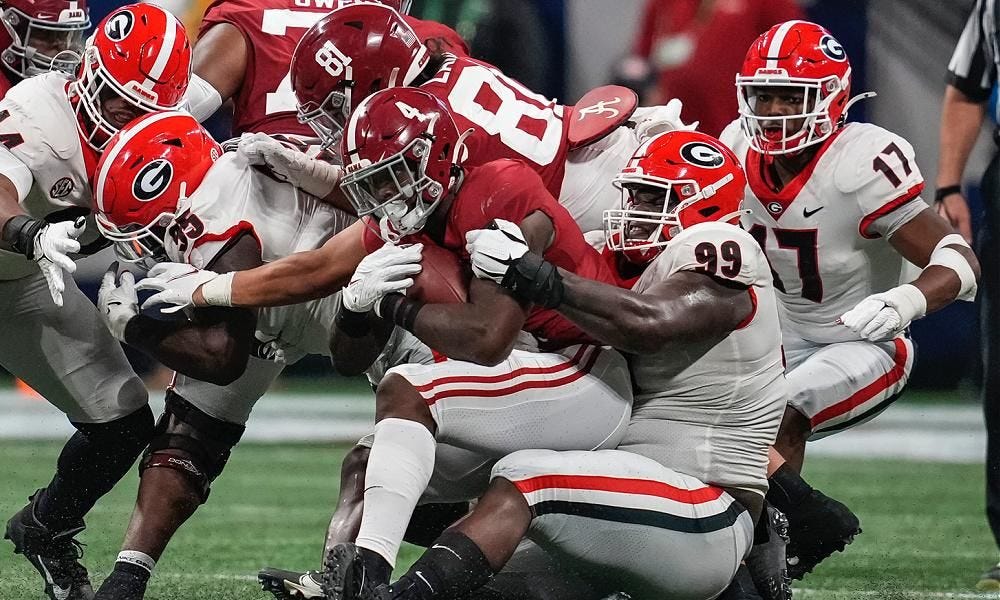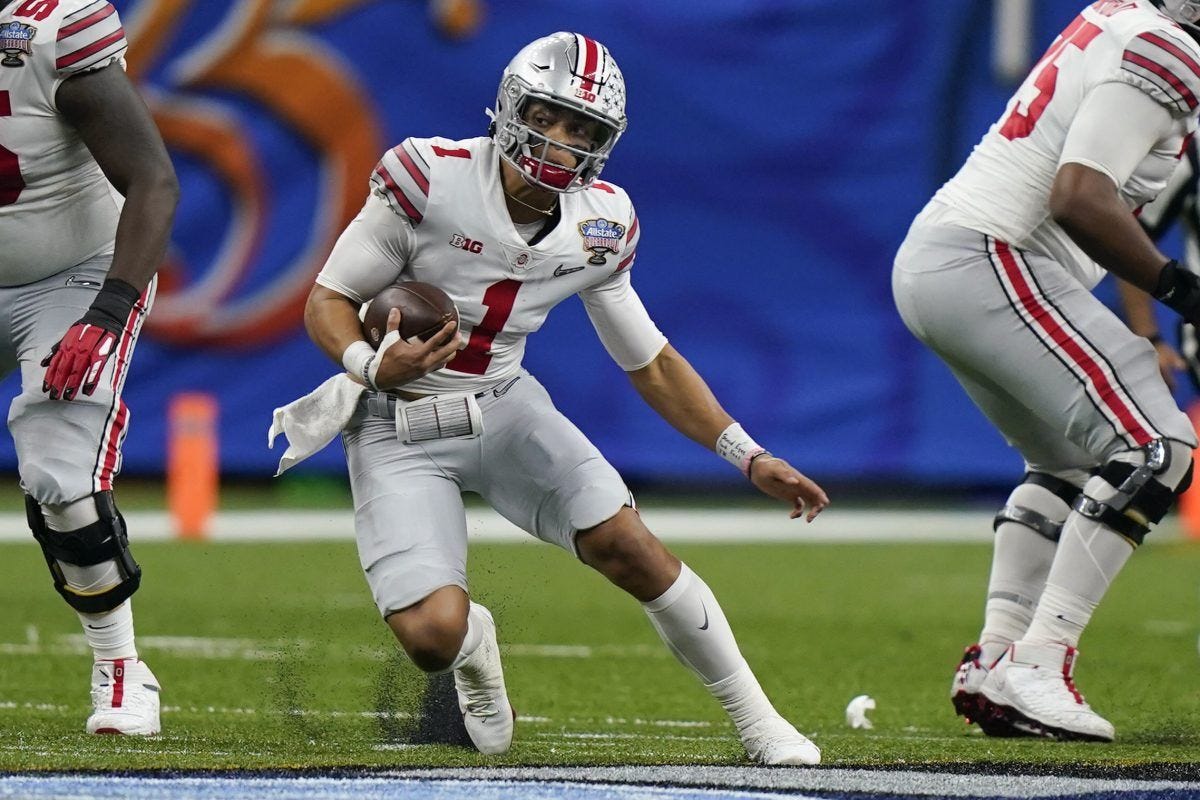For awhile I was a part-time college football journalist. It was fun. College football is my favorite sport and I enjoyed diving deeply into data to find some glimmer of an that actually was original. My articles got picked up by major newspapers and network websites around the country.
Going to a top tier bowl game, watching the game from the press booth, meeting major reporters, and watching the 4th quarter on the field (so close that I was on TV broadcast of the final play of the game) were incredible experiences.
But they also showed me what the “life” of a sports journalist is really like. When I was offered a full-time position, I passed.
Still, it was fun times and I have good memories.
College football is a huge mess and has been for a long time. College basketball has this great tournament at the end of the season, called March Madness, where smaller schools actually get a shot to take on the power teams. And with basketball, a strong team of experienced players can sometimes beat the team with more talent, so we regularly have the Cinderella teams, coming out of nowhere and having success, at least for a moment, though sometimes longer like Gonzaga.
College football lacks this. When I was a kid, the system was entirely subjective. There were 4 major bowl games: Rose, Sugar, Orange, and Cotton, and a handful of other bowls, and New Years Day featured all the major bowls plus a couple more and, at the end of the day, one or two teams would be voted in polls as a national champion. One poll was the journalists and the other the coaches. Sometimes they would disagree.
Later the Fiesta Bowl joined into the top tier, and the Peach was almost there. The major bowls had tie-ins to various conferences.
One of the key factors of the older system was regionalism. There wasn't many games between teams from outside the regions, except for bowl games and things like the USC Notre Dame rivalry. So there was quite a lot of regional
The Rose Bowl, in Pasadena, Californi, featured the Pacific Athletic Conference (PAC) versus the Big Ten Conference (Big 10) champ. The PAC was west coast teams with USC and UCLA the kings of the conference, while the Big Ten was based in the Midwest with Ohio State and Michigan as the two biggest schools. The PAC added two Arizona schools to become the PAC 10 in the late 70s.
The Southwest Conference (SWC) had 8 Texas schools, plus Arkansas, and had a tie-in to the Cotton Bowl in Dallas. Arkansas, Texas, and Texas A&M were the best schools, but SMU had a period of great success in the late 70s and early 80s achieved their numerous rules violations, eventually resulting in a total ban for SMU, called the Death Penalty. This was so devastating to the program that the Death Penalty was never given to any other program, even when many have done much worse.
The Big 8 Conference (Big 8) was between the Big Ten and the Southwest Conference, with its two best teams Nebraska and Oklahoma. The Big 8 champ would play in the Orange Bowl in Miami.
The Southeast Conference (SEC) was the teams of the Old South, with Florida, Georgia, and Alabama being the top schools, with the champ playing in the Sugar Bowl in New Orleans.
The Atlantic Coast Conference (ACC) was a step below, at least for football, but it was still a “major” conference. It's champ played in the Peach Bowl in Atlanta.
The last “major" conference was the Western Athletic Conference (WAC), which including two Arizona schools and various mountain schools. Its champion played in the Fiesta Bowl in Phoenix. Both the conference and the bowl were below the other major conferences and bowls.
Finally we had “major independents”, schools not in a conference. The biggest were Notre Dame and Penn St, but there were others as well, mostly in the northeast. The major independents played each other enough that it was almost like they were in their own conference. The top major independents would often fill the open spots at the Cotton, Orange, Sugar, and Fiesta Bowls.
The bowl games were officially locally organized non profits. The bowl committees worked with TV partners and sponsors and local community groups and governments to put on the events and pick the teams.
The ultimate purpose of the bowl games was revenue for the local community, at least at first. The Rose Bowl is the “Grandaddy”, the oldest bowl and was designed to promote southern California to the Midwest.
There were always disputes as to the best team each year, as there was the lack of a playoff system. Still, the scheme made for a fun New Year's Day and great debates among fans.
The NCAA controlled TV for the schools. It limited appearances and some claimed to favored certain schools.
In 1977, the College Football Association (CFA) was formed by 63 schools from the Big 8, SEC, SWC, WAC, and ACC, plus major independents. They wanted to address the TV broadcast issue, as well as push reforms to limit the role of non “major” schools in governing major college football.
Noticeably both the Big 10 and the PAC were not part of the CFA. The schools of the CFA thought the NCAA favored these two conferences.
In 1981, the CFA negotiated its own TV contract and sued the NCAA over the issue, which ended up in the US Supreme Court. The Court ruled in favor of the CFA in 1984. The first game broadcast under the CFA contract was BYU at Pitt on ESPN, which was ESPN's first college football broadcast. Incidentally, or maybe not, BYU won the national title in 1984.
The 1980s represented a change from previous eras. Upstart independents and relative outsiders ended up winning most of national championships. The traditional powers were not happy. This ultimately led to the changes we have been experiencing for the last 30 years, where it is still a mess.
My next post in this series will cover generally the last 3 decades, leading up to my discussion of the sport today.





